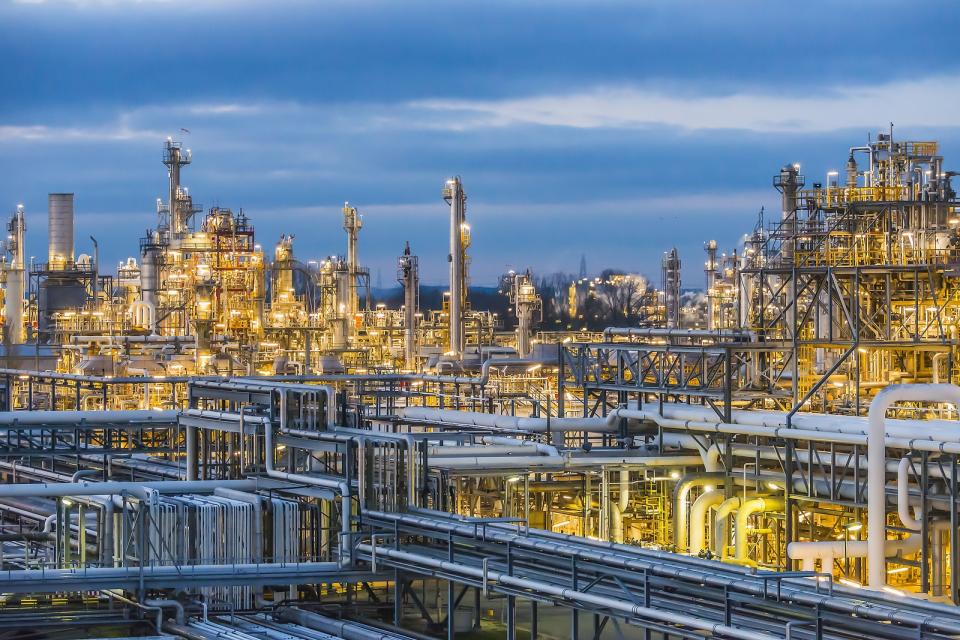Why Shares of DowDuPont Dropped 20% in May
What happened
DowDuPont's (NYSE: DWDP) short history as a public company ended with a whimper, trading down 20.6% in May according to data provided by S&P Global Market Intelligence. The company, formed from the $130 billion merger between Dow Chemical and DuPont in September 2017 and designed from the beginning to be broken apart, was battered by geopolitical uncertainty in its final days before a breakup.
So what
DowDuPont underperformed the market by a significant margin during its brief existence, as investors stayed away in anticipation of the company executing its plan to separate its material sciences unit and agriculture business from its specialty products operation.

A chemical manufacturing site in Stade, Germany. Image source: DowDuPont.
The first split, Dow Inc. (NYSE: DOW), was completed in March, but the remaining agriculture and specialty businesses were left vulnerable to the trade tensions that spooked Wall Street in May. The agriculture unit is banking on increasing sales to China and on U.S. agriculture trade with China flourishing for growth. The specialty products business tends to benefit from a healthy economy and strong demand for finished goods.
The agriculture side of the business was also hit by flooding in the Midwest that devastated corn and soybean crops. The environmental damage to the region is expected to limit harvests in 2019, which in turn will eat into demand for those products.
Now what
The final split became official on June 3 with the separation of Corteva (NYSE: CTVA) agriculture from the rechristened DuPont (NYSE: DD). After 18 months of being forced to either buy into the entire package or stay on the sidelines, investors finally have the ability to pick and choose among three very different businesses.
In the early days of June, the new DuPont is up 14%, while Corteva is down 1.74%, matching projections about which unit is the better buy. In the long run, each company is better off on its own, able to make its own strategic and capital allocation decisions.
DowDuPont went out with a whimper, but the best is yet to come for the three offspring it left behind.
More From The Motley Fool
Lou Whiteman has no position in any of the stocks mentioned. The Motley Fool has no position in any of the stocks mentioned. The Motley Fool has a disclosure policy.

 Yahoo Finance
Yahoo Finance 